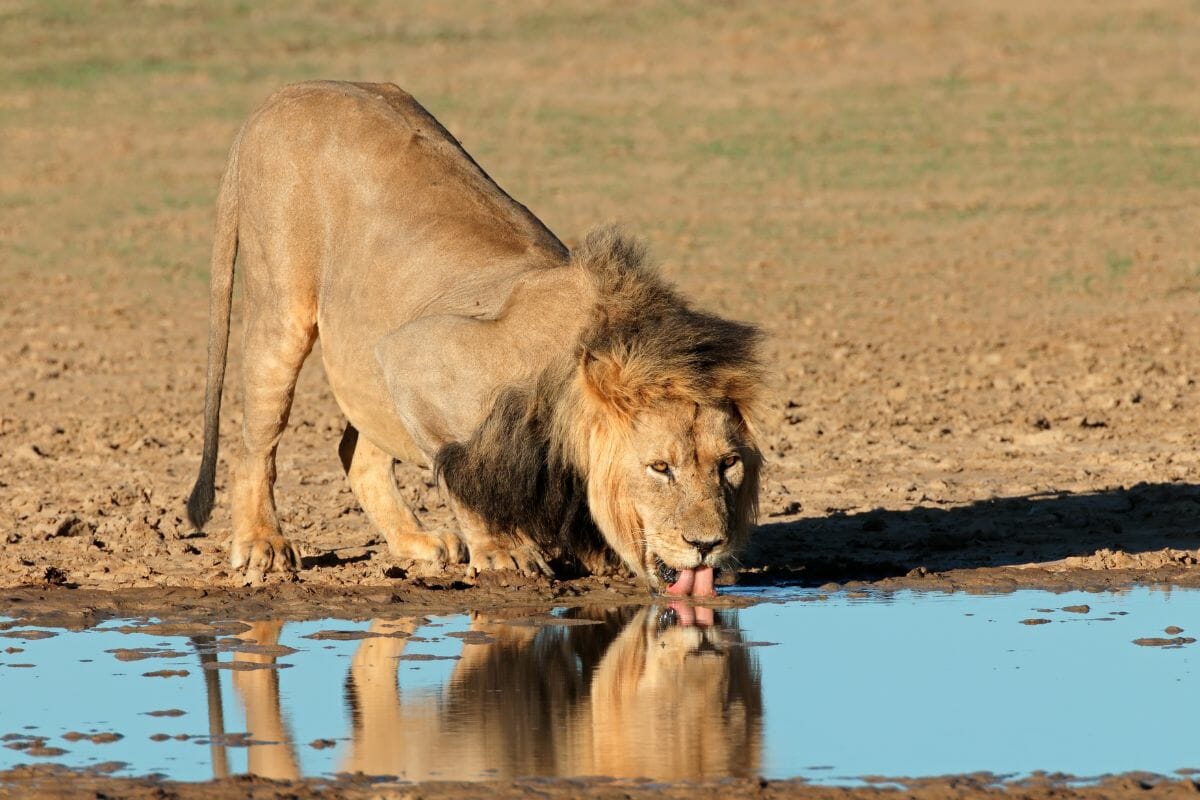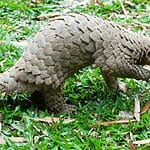Hedgehogs, with their adorable appearance and unique spiny coats, have captured the hearts of many. However, they are not the only creatures in the animal kingdom to sport such distinctive features.
From the African Pygmy Hedgehog to the North American Porcupine, several animals around the world bear a striking resemblance to hedgehogs. These fascinating creatures have evolved similar adaptations, such as spines and quills, to protect themselves from predators and thrive in their respective habitats.
In this article, we will explore the world of Animals That Look Like Hedgehogs, uncovering their similarities, differences, and the evolutionary marvels that have shaped their existence.
Quick Answer: African pygmy hedgehogs, porcupines, tenrecs, short-tailed opossums, rock hyraxes, sugar gliders, bettongs, and Virginia opossums all resemble hedgehogs with their spiny or furry coats.
Key Takeaways:
- Several animals share similar physical characteristics with hedgehogs, such as spines, quills, and compact bodies, despite being from different species and habitats.
- These hedgehog look-alikes have evolved unique adaptations to thrive in their respective environments, including defense mechanisms, insulation, and specialized diets.
- While hedgehogs and their look-alikes may appear similar, they have distinct evolutionary histories and relationships, with some being more closely related to other species than to hedgehogs themselves.
Animals That Resemble Hedgehogs
While hedgehogs are unique and adorable creatures, there are several other animals that share similar physical characteristics with them. These animals have adapted to their respective habitats by developing spines, quills, and other features that make them resemble hedgehogs. Let’s take a closer look at some of these fascinating creatures.
African Pygmy Hedgehog
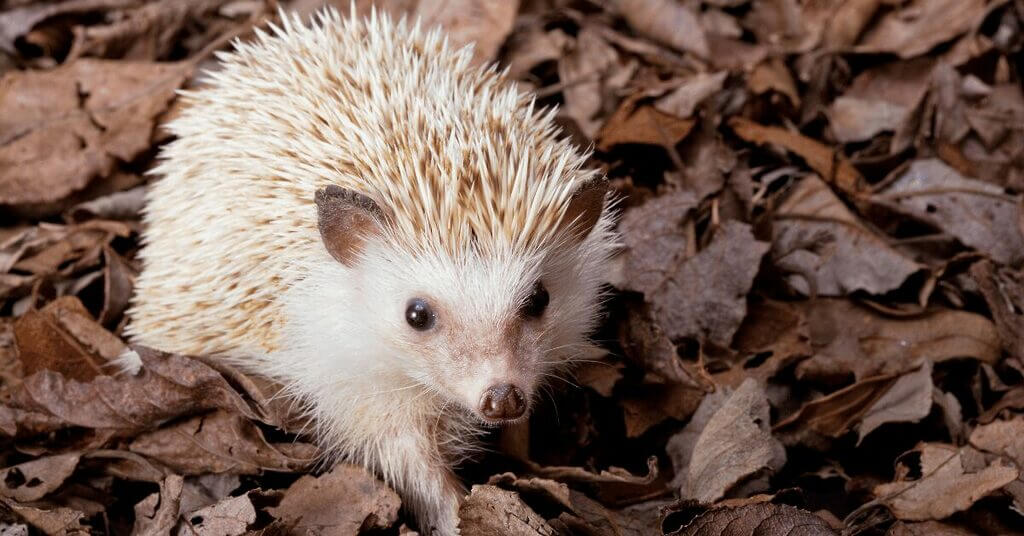
The African Pygmy Hedgehog is a small, compact animal that measures just 6-8 inches long. It has short legs and a pointed snout, giving it a striking resemblance to its larger hedgehog cousins. One of the most notable features of the African Pygmy Hedgehog is its spines, which are actually modified hairs that help protect it from predators. These spines cover most of its body, except for its face, legs, and belly.
African Pygmy Hedgehogs are native to central and eastern Africa, where they inhabit grasslands and savannas. They are primarily nocturnal and spend their days sleeping in burrows or hiding under vegetation. These small hedgehogs have a diverse diet that includes insects, fruits, and vegetables.
North American Porcupine
The North American Porcupine is a large rodent that can grow up to 3 feet long. It has a stocky build and is covered in long, sharp quills that serve as a defense mechanism. These quills are actually modified hairs that detach easily when touched, making it difficult for predators to attack without getting a mouthful of painful spines.
North American Porcupines are found throughout North America, from Canada to northern Mexico. They are primarily arboreal, meaning they spend much of their time in trees. These porcupines have a herbivorous diet and feed on bark, leaves, and twigs. Their sharp claws and muscular tail help them climb trees with ease.
Old World Porcupine
The Old World Porcupine is another large rodent that can reach lengths of up to 3 feet. Like its North American cousin, it has a stocky build and is covered in long, sharp quills. However, these quills are hollow and can rattle when the porcupine feels threatened, serving as a warning to potential predators.
Old World Porcupines are found throughout Africa, Europe, and Asia, where they inhabit a variety of habitats, including forests, grasslands, and rocky areas. They are herbivorous and feed on bark, roots, and fruits. These porcupines are primarily nocturnal and spend their days sleeping in burrows or rock crevices.
Tenrec
The Tenrec is a small mammal that is native to the island of Madagascar. It has a spiny coat that is made up of modified hairs, similar to those of a hedgehog. These spines help protect the Tenrec from predators, while also providing insulation in its tropical habitat.
Tenrecs are insectivorous and feed primarily on insects, such as beetles, crickets, and termites. They are also known to enter a state of torpor during the dry season, which helps them conserve energy when food is scarce. Tenrecs are important members of the Malagasy ecosystem and play a role in controlling insect populations.
Short-Tailed Opossum
The Short-Tailed Opossum is a small marsupial that is native to South America. It has a compact body that is covered in dense, woolly fur, which provides insulation in its forest habitat. The Short-Tailed Opossum’s fur is grayish-brown in color, and it has a short, stubby tail that is covered in fur.
Short-Tailed Opossums are omnivorous and feed on a variety of items, including insects, fruits, and small vertebrates. They are nocturnal and spend their days sleeping in tree cavities or burrows. These opossums are important seed dispersers in their native ecosystems, helping to maintain plant diversity.
Rock Hyrax
The Rock Hyrax is a small mammal that is native to Africa and the Middle East. Despite its small size (18-20 inches long), it has a stocky build and is covered in short, dense fur. The Rock Hyrax’s fur is actually a combination of hair and underfur, which provides excellent insulation in its rocky habitat.
Rock Hyraxes are herbivorous and feed on a variety of vegetation, including leaves, grasses, and fruits. They are social animals and live in colonies of up to 50 individuals. These hyraxes are important prey items for many predators, such as eagles, leopards, and snakes.
Sugar Glider
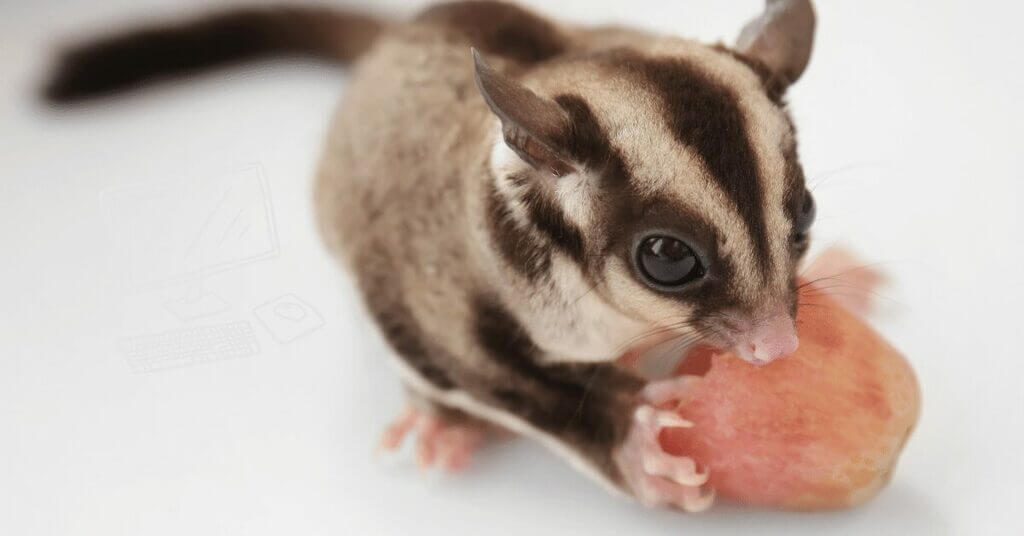
The Sugar Glider is a small marsupial that is native to Australia and Indonesia. It has a small body (6-8 inches long) that is covered in soft, silky fur. The Sugar Glider’s fur is a combination of hair and underfur, which provides excellent insulation in its forest habitat. One of the most striking features of the Sugar Glider is its large, expressive eyes, which help it navigate through the trees at night.
Sugar Gliders are omnivorous and feed on a variety of items, including insects, sap, and nectar. They are also known for their ability to glide using a membrane between their front and hind legs. This allows them to cover distances of up to 50 meters in a single glide, making them one of the most agile marsupials in the world.
Bettong
The Bettong is a small marsupial that is native to Australia. It has a small body (12-16 inches long) that is covered in dense, woolly fur, which provides excellent insulation in its forest habitat. The Bettong’s fur is grayish-brown in color, and it has a long, thin tail that is used for balance.
Bettongs are omnivorous and feed on a variety of items, including roots, tubers, and fungi. They are important members of the Australian ecosystem and play a key role in dispersing fungal spores throughout the forest floor. Bettongs are nocturnal and spend their days sleeping in burrows or hollow logs.
Virginia Opossum
The Virginia Opossum is a medium-sized marsupial that is native to North America. It has a body that can grow up to 3 feet long and is covered in grayish-white fur. The Virginia Opossum’s fur is a combination of hair and underfur, which provides excellent insulation in its woodland habitat. One of the most notable features of the Virginia Opossum is its long, scaly tail, which is used for balance and grasping.
Virginia Opossums are omnivorous and feed on a variety of items, including insects, small mammals, and fruits. They are also known for their ability to “play dead” as a defense mechanism when threatened by predators. This involves the opossum rolling over, becoming stiff, and secreting a foul-smelling substance from its anal glands, which can deter potential attackers.
Similarities and Differences Between Hedgehogs and Their Look-Alikes
While hedgehogs and their look-alikes share many striking similarities, they also have distinct differences that set them apart. By examining their physical characteristics, behaviors, habitats, and evolutionary relationships, we can gain a deeper understanding of how these fascinating creatures are both alike and unique.
Physical Characteristics
One of the most apparent similarities between hedgehogs and their look-alikes is their spiny coats. These spines, which are actually modified hairs, serve as a crucial defense mechanism against predators. When threatened, these animals can roll into a tight ball, presenting a formidable barrier of sharp spines to deter potential attackers.
However, upon closer inspection, we can see differences in the structure and composition of their spines or quills. For example, the African Pygmy Hedgehog has shorter, less dense spines compared to the North American Porcupine, whose quills are much longer and thicker.
The Old World Porcupine’s quills are hollow and can rattle when threatened, while the Tenrec’s spines are more flexible and less rigid than those of a hedgehog.
In terms of size and weight, hedgehogs and their look-alikes vary considerably. The African Pygmy Hedgehog, for instance, typically measures between 6 and 8 inches long and weighs around 1 pound, while the North American Porcupine can grow up to 3 feet long and weigh as much as 40 pounds.
Other physical differences can be observed in their facial features, snouts, tails, and limbs. The Short-Tailed Opossum has a short, stubby tail, while the Virginia Opossum boasts a long, scaly tail. The Rock Hyrax has a stocky build and short, dense fur, while the Sugar Glider has soft, silky fur and a slender body adapted for gliding.
Behavior and Habitat
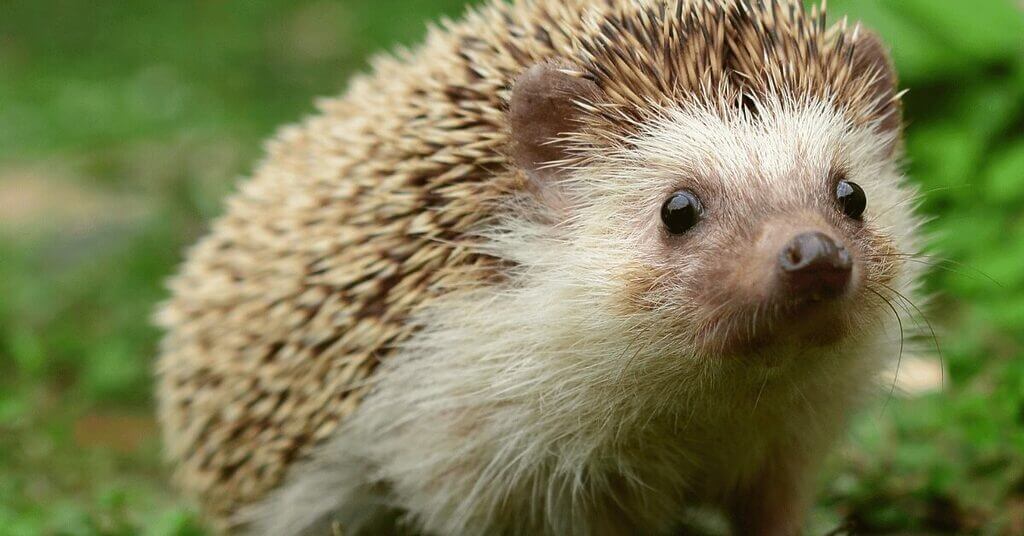
Hedgehogs and their look-alikes exhibit diverse behavioral patterns and habitat preferences that reflect their unique adaptations and ecological roles. Some species, like the African Pygmy Hedgehog and the Tenrec, are primarily nocturnal, foraging for insects and other small prey during the night. Others, such as the Rock Hyrax, are diurnal and most active during the day.
These animals also vary in their social structures. Hedgehogs are generally solitary creatures, only coming together for mating purposes. In contrast, some species, like the Bettong and the Sugar Glider, may live in small groups or colonies, engaging in complex social interactions and cooperative behaviors.
Habitat preferences also differ among hedgehogs and their look-alikes. The African Pygmy Hedgehog inhabits grasslands and savannas, while the North American Porcupine can be found in a variety of habitats, from forests to deserts. The Rock Hyrax prefers rocky outcrops and crevices, while the Sugar Glider is arboreal, spending most of its time in trees.
Each species has evolved unique adaptations to thrive in its specific environment. For example, the Short-Tailed Opossum has dense, woolly fur that provides excellent insulation in its native South American habitat, while the Sugar Glider has a gliding membrane that allows it to navigate through the treetops efficiently.
Evolutionary Relationships
Despite their similarities, hedgehogs and their look-alikes have distinct evolutionary histories and relationships. Through scientific classification and phylogenetic analysis, we can understand how these animals are grouped and related to one another.
Hedgehogs belong to the family Erinaceidae, which is part of the order Eulipotyphla. This order also includes shrews and moles, but not the other animals discussed in this article. The Tenrec, for example, is more closely related to elephants and sea cows than to hedgehogs, despite their similar appearances.
Convergent evolution is a key concept in understanding how hedgehogs and their look-alikes have developed similar traits independently. This process occurs when different species face similar environmental pressures, leading to the evolution of comparable adaptive traits. The spiny coats and insectivorous diets of hedgehogs and some of their look-alikes are prime examples of convergent evolution.
Fossil records and genetic studies provide valuable insights into the ancestral links and divergence points between these animals. For instance, the earliest known hedgehog fossils date back to the Eocene epoch, approximately 50 million years ago. The Virginia Opossum, on the other hand, has a fossil record that extends back to the Cretaceous period, over 66 million years ago.
By studying these evolutionary relationships and the adaptive traits that have emerged over time, we can better appreciate the incredible diversity and resilience of hedgehogs and their look-alikes, as well as the complex processes that have shaped their existence.
Frequently Asked Questions
Do any of the hedgehog look-alike animals make good pets?
While some hedgehog look-alikes, such as the African Pygmy Hedgehog, can make good pets, it’s essential to research their specific care requirements and check local regulations before considering them as a pet.
Are hedgehog look-alikes found in the same geographical regions as hedgehogs?
Hedgehog look-alikes are found in various regions around the world, including Africa, North America, South America, and Australia, while hedgehogs are primarily native to Europe, Asia, and Africa.
Do hedgehog look-alikes have similar diets to hedgehogs?
The diets of hedgehog look-alikes vary depending on the species, with some being insectivores like hedgehogs, while others are herbivores or omnivores.
Are hedgehog look-alikes endangered or threatened?
The conservation status of hedgehog look-alikes varies by species, with some being more threatened than others due to habitat loss, hunting, or other factors.
Can hedgehog look-alikes shoot their quills like porcupines?
Unlike porcupines, hedgehog look-alikes cannot shoot their quills or spines, but the spines still serve as an effective defense mechanism when the animal rolls into a ball.
- Wild Animals in Costa Rica: A Biodiverse Paradise - 2024-05-16
- Animals That Live in the Rainforest: A Diverse Wonder - 2024-05-15
- Animals in the Safari: A Captivating African Adventure - 2024-05-15






